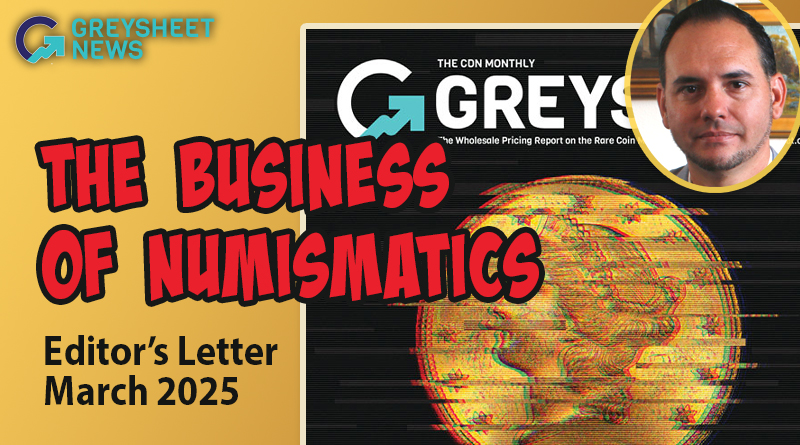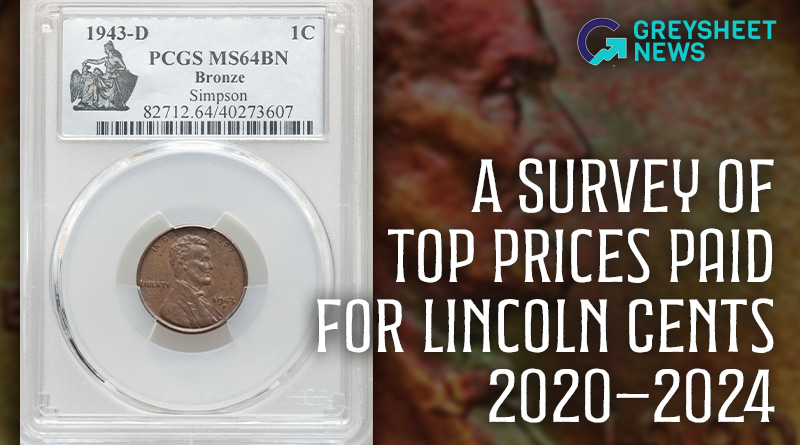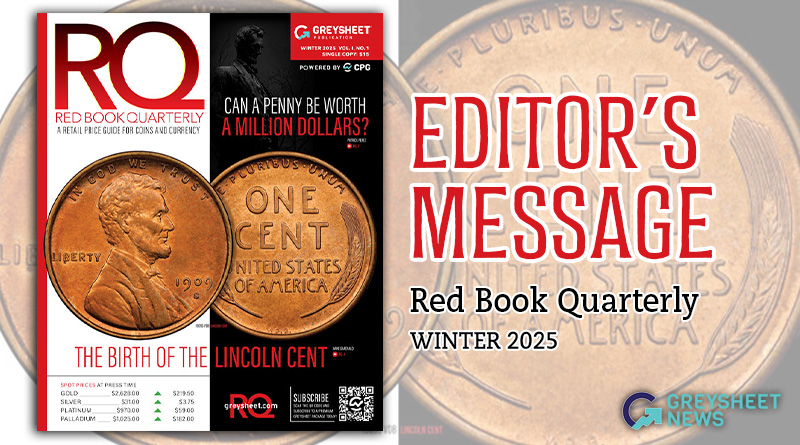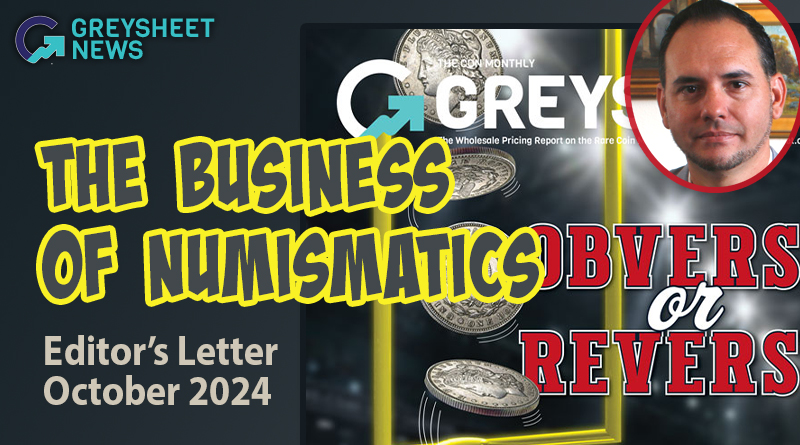The Business Of Numismatics: October 2024 Greysheet Editor's Letter
There is a significant amount of fresh money available to buy rare coins, which is nothing but positive for the industry.
With the auction sales held in association with the ANA World’s Fair of Money® now in the rear-view mirror, there is much to learn about the state of the market. The primary auctioneer of the event is Stack’s Bowers Galleries, who held a wide-ranging sale across all four major genres of numismatics. The top-line number of the sale was “nearly $50 million” from the post-sale press release, while an exact number was not quoted. Breaking it down by category, the United States coins and related material contributed $32 million to the total, with the Rarities Night session bringing in over $19 million alone. World and Ancient coins brought in more than $11.5 million, while U.S. and World paper money sold just under $7 million worth of material. In reviewing the results, a couple main points jumped off the page. The first was that it was not only the famous or promoted rarities that achieved very strong results, it was also the more “traditional” key dates and type coins that performed very well. One of the best examples of this is the 1927-S quarter; a PCGS certified MS63 sold for $12,600, a new record for the grade. Interestingly, back in May Heritage sold an NGC MS62 for $9,300, which also appears to be a record for that numerical grade. It is also notable that neither of these coins had a sticker of approval from CAC. A wonderfully toned 1924-D Buffalo nickel graded PCGS MS65+ sold for $15,600; previous sales coins in this grade had not broken $5,000. A well-known key date, the 1895-O Morgan Dollar had two examples in PCGS AU58 in the sale: one sold for a record $13,200 and the other with some nicks on the cheek, for $4,560. A third example, a 1795 Flowing Hair half dollar, 2 Leaves, PCGS MS64 sold for $240,000, narrowly eclipsing a PCGS/CAC MS64 sold last August to set a new record.
The 1795 half dollar above illustrates another aspect of the ANA auctions that stood out: coins that have been sold recently—within the past three years—resold again for much higher prices. This is not common in the context of the historical rare coin market. We have seen many times when a coin is reoffered in auction in a short time span, only to sell for less and less each time. In some cases there was an explanation; the coin had an obvious flaw, it was overgraded, etc. Usually, one would expect that important rare coins would go into long-term collections and not be seen on the market again for some time. The 1795 half sold for $144,000 in November 2019, $186,000 in January 2022, and now $240,000, a 66.6% increase in less than five years. This was also the case for the top lot in the SBG auction, the famous Bass 1825/4/1 Proof Capped Head half eagle. It sold for $1,080,000 after bringing $630,000 in January 2023. It is hard to explain this phenomenon, because it is logical to conclude that those buying coins at this level have been in rare coins for some time, and they or their agents review all major auctions. Perhaps the resources were not available at the time of the earlier sale, and clearly there is no hesitation to pay 20 to 60% more to get the coin now. One thing that is certain is that there is a significant amount of fresh money available to buy rare coins, which is nothing but positive for the industry.
Sincerely,
Patrick Ian Perez, patrick@whitmanbrands.com

Download the Greysheet app for access to pricing, news, events and your subscriptions.
Subscribe Now.

Subscribe to The Greysheet for the industry's most respected pricing and to read more articles just like this.
Author: Patrick Ian Perez
Related Stories (powered by Greysheet News)
View all news
Gold and especially silver has continued to climb, with silver well above the $32 line as I write this column.

The beauty of the Lincoln Cent's 115-year (and counting) run is that it can be collected by every single level of coin collector.

Welcome to the very first issue of the Red Book Quarterly™!









Please sign in or register to leave a comment.
Your identity will be restricted to first name/last initial, or a user ID you create.
Comment
Comments